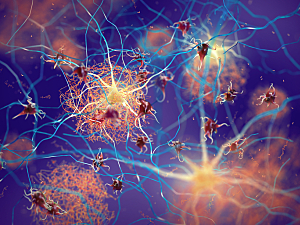Aducanumab, the recently approved anti-amyloid monoclonal antibody for treating Alzheimer’s disease, must be administered every four weeks to enable penetration across the blood–brain barrier. Frequent high-dose treatment is also an expected requirement for similar drugs currently under investigation.
Researchers at Brigham and Women’s Hospital are investigating therapeutic focused ultrasound to enhance antibody delivery to the brain when treating Alzheimer’s disease. Praveen Bathini, PhD, a research fellow in the Ann Romney Center for Neurologic Diseases, Tao Sun, PhD, a research fellow in the Focused Ultrasound Laboratory in the Department of Radiology, Nathan J. McDannold, PhD, a professor in the Department of Radiology, Cynthia A. Lemere, PhD, an associate professor of neurology in the Ann Romney Center, and colleagues describe their work in Biomolecules.
Background
For the treatment of neurological disease, the focus of therapeutic focused ultrasound is to generate microbubbles in contrast agents. The oscillations induced by those bubbles create shear stress and radiating forces at the cerebral endothelial surface, causing a transient opening of the blood–brain barrier so therapeutic agents can enter.
In a previous study in the Journal of Controlled Release, the Brigham team combined focused ultrasound with 07/2a, a monoclonal antibody that targets a particularly toxic form of amyloid β called pyroglutamate-3 (pGlu-3). They used “middle-aged” (16-month-old) APP/PS1dE9 transgenic mice, which develop vascular amyloid pathology as they age.
The combination therapy reduced pGlu-3 Aβ and Aβ42 plaque load and increased glial activity and neutrophil infiltration, resulting in significant cognitive improvement.
Aducanumab is controversial partly because 19% to 35% of patients in phase 3 trials developed amyloid-related edema and/or microhemorrhages, respectively (published in JAMA Neurology). But in the mouse study, there were no significant differences in the number of microbleeds between four treatment groups: combination treatment, 07/2a alone, ultrasound alone, or saline.
Newest Findings
More recently, the Brigham team studied the acute effects of the combination treatment in very old APP/PS1dE9 mice (age 24 months):
- Adding bilateral focused ultrasound to the administration of 07/2a resulted in increased brain levels of the antibody by 5.6-fold at four hours after administration, compared with mice that received antibody alone
- The increased antibody levels were maintained 72 hours after administration
- After ultrasound, the antibody concentration was higher in the brain than in plasma, indicating good uptake across the blood–brain barrier
- Activation of microglia and infiltration of neutrophils were evident by four hours after ultrasound
- There was no significant increase in microbleeds after combination treatment compared with controls
A Foundation for Future Research
Increasing antibody delivery to the brain with focused ultrasound may be a valuable adjuvant to amyloid immunotherapy for Alzheimer’s disease. Focused ultrasound might also allow reduced doses of antibodies and improve drug targeting to Aβ plaque.
